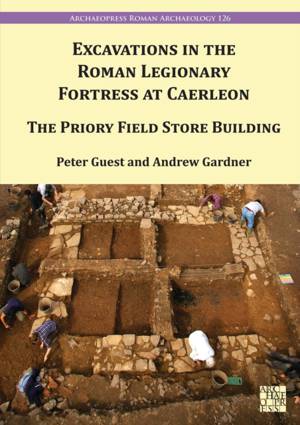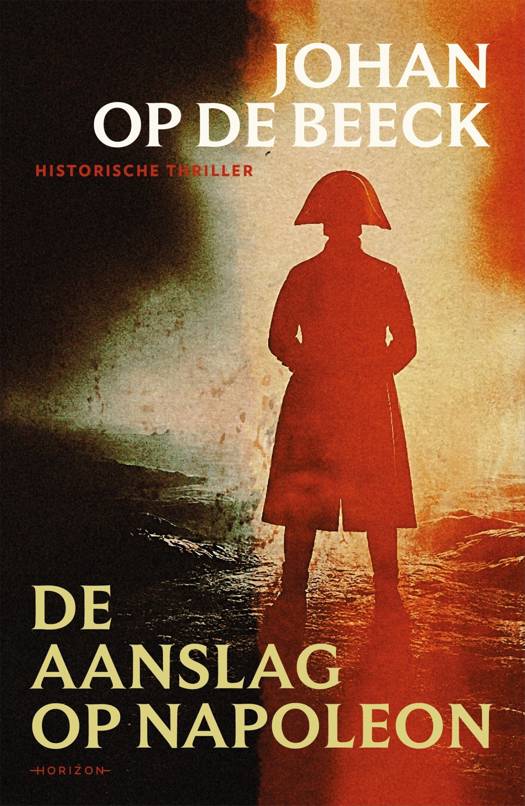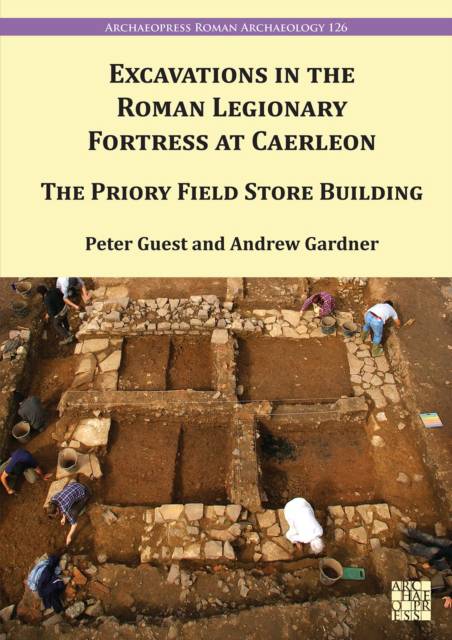
- Afhalen na 1 uur in een winkel met voorraad
- Gratis thuislevering in België vanaf € 30
- Ruim aanbod met 7 miljoen producten
- Afhalen na 1 uur in een winkel met voorraad
- Gratis thuislevering in België vanaf € 30
- Ruim aanbod met 7 miljoen producten
Zoeken
Excavation in the Roman Legionary Fortress at Caerleon
The Priory Field Store, 2007-2010
Peter Guest, Andrew Gardner
€ 67,95
+ 135 punten
Omschrijving
The Priory Field excavation was a research, training and engagement project that investigated a large courtyard store-building in the legionary fortress of Isca at Caerleon. This was the first legionary store excavated to modern standards in the Roman Empire. The excavation exposed the building's main entranceway and two small adjoining rooms, as well as four squarer storerooms. The coins and pottery provide an excellent chronological sequence for the store, which was constructed around AD 90-110 and remained in use until the end of the 3rd century, after which it fell into a derelict state before being partially demolished and levelled by around 350. Debris from the building's collapse and demolition sealed the floors of two store rooms, one of which was littered with military finds, many of which survived in a very fragile condition. These included the highly fragmentary remains of a rare example of an elaborately decorated horse's headpiece, at least one set of dismantled lorica segmentata body armour, as well as another set of unusual scale armour. Two new buildings were constructed among the ruins of the old and partially demolished legionary store, including one 3 room cottage-like building. Radiocarbon dates demonstrate this building was constructed and in use between 430 and 600. This is the first new structure at a Roman site definitively dated to the post-Roman 5th and 6th centuries from Wales (and, arguably, from Britain), and it has an important story to tell about life in Isca after the ending of Britannia, c. 410.
Specificaties
Betrokkenen
- Auteur(s):
- Uitgeverij:
Inhoud
- Aantal bladzijden:
- 374
- Taal:
- Engels
- Reeks:
Eigenschappen
- Productcode (EAN):
- 9781803276908
- Verschijningsdatum:
- 29/05/2025
- Uitvoering:
- Paperback
- Formaat:
- Trade paperback (VS)
- Afmetingen:
- 203 mm x 290 mm
- Gewicht:
- 199 g

Alleen bij Standaard Boekhandel
+ 135 punten op je klantenkaart van Standaard Boekhandel
Beoordelingen
We publiceren alleen reviews die voldoen aan de voorwaarden voor reviews. Bekijk onze voorwaarden voor reviews.











